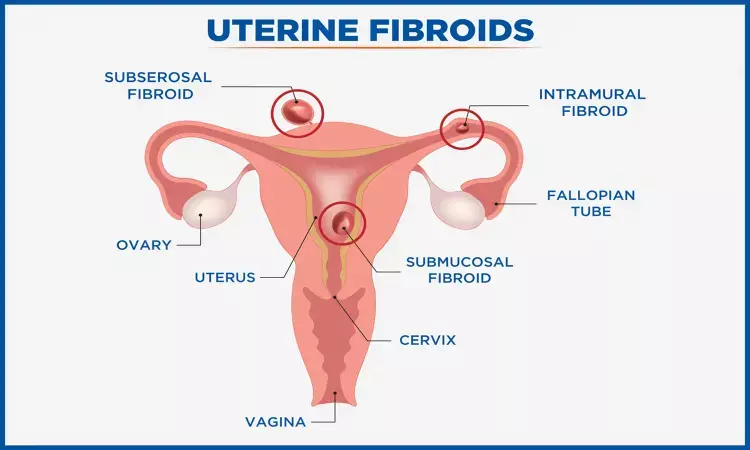- Home
- Medical news & Guidelines
- Anesthesiology
- Cardiology and CTVS
- Critical Care
- Dentistry
- Dermatology
- Diabetes and Endocrinology
- ENT
- Gastroenterology
- Medicine
- Nephrology
- Neurology
- Obstretics-Gynaecology
- Oncology
- Ophthalmology
- Orthopaedics
- Pediatrics-Neonatology
- Psychiatry
- Pulmonology
- Radiology
- Surgery
- Urology
- Laboratory Medicine
- Diet
- Nursing
- Paramedical
- Physiotherapy
- Health news
- Fact Check
- Bone Health Fact Check
- Brain Health Fact Check
- Cancer Related Fact Check
- Child Care Fact Check
- Dental and oral health fact check
- Diabetes and metabolic health fact check
- Diet and Nutrition Fact Check
- Eye and ENT Care Fact Check
- Fitness fact check
- Gut health fact check
- Heart health fact check
- Kidney health fact check
- Medical education fact check
- Men's health fact check
- Respiratory fact check
- Skin and hair care fact check
- Vaccine and Immunization fact check
- Women's health fact check
- AYUSH
- State News
- Andaman and Nicobar Islands
- Andhra Pradesh
- Arunachal Pradesh
- Assam
- Bihar
- Chandigarh
- Chattisgarh
- Dadra and Nagar Haveli
- Daman and Diu
- Delhi
- Goa
- Gujarat
- Haryana
- Himachal Pradesh
- Jammu & Kashmir
- Jharkhand
- Karnataka
- Kerala
- Ladakh
- Lakshadweep
- Madhya Pradesh
- Maharashtra
- Manipur
- Meghalaya
- Mizoram
- Nagaland
- Odisha
- Puducherry
- Punjab
- Rajasthan
- Sikkim
- Tamil Nadu
- Telangana
- Tripura
- Uttar Pradesh
- Uttrakhand
- West Bengal
- Medical Education
- Industry
Lidocaine and epinephrine combo reduces blood loss in Abdominal Myomectomy

During abdominal myomectomy, a combination of lidocaine and epinephrine appeared to be a safe and effective way to reduce blood loss, says an article published in Health Science Reports.
Abdominal myomectomy can produce significant intraoperative bleeding, which can lead to negative consequences. Uterine fibroid is a common benign pelvic tumor. As a result, Mandana Mansour-Ghanaei and colleagues undertook this study to see how efficient lidocaine with epinephrine injections are at reducing intraoperative bleeding during abdominal myomectomy.
60 women with uterine fibroids were included in a randomized controlled experiment between October 2019 and May 2020. All of the patients were randomly assigned to one of two groups: lidocaine with epinephrine (Group L) or placebo (Group P). Lidocaine 3 mg/kg + 0.5 ml adrenaline diluted to 50 cc with saline solution was utilized in group L, whereas 50 ml of normal saline was used in group P. Before incision, both the mixed solution and regular saline were injected into the serous and myometrium above and surrounding the fibroid. The demographic characteristics, total operating time, hemoglobin changes, and degree of surgical difficulties of the two groups were assessed and compared.
The key findings of this study were as follow:
1. In terms of demographic statistics, there was no substantial difference between the two groups.
2. In comparison to Group P, hemoglobin alterations (p 0.0001) and the degree of operation difficulty (p = 0.01) were considerably lower in Group L.
3. The decline in hemoglobin levels from baseline to 4 hours postoperatively was considerable in each group (p 0.0001).
4. Hemoglobin alterations and the degree of surgical difficulties were shown to have a statistically significant relationship with uterine and fibroids size (p 0.05).
5. While there was a negative connection between gravidity and surgical difficulties (r = 0.413, p = 0.02), Surgery time was greater in Group P than in Group L (70.66±19.85 versus 66.16± 14.48, respectively), although the difference was not significant (p = 0.32).
6. In both groups, no notable adverse reactions or severe complications were recorded. Throughout the procedure, hemodynamic values were managed within normal limits.
In conclusion, the injection of a saline solution combining lidocaine and adrenaline in abdominal myomectomy was shown to be an effective and safe strategy in this investigation. More well-planned experiments with bigger sample sizes and more information are strongly advised for finding practical outcomes that can be generalized to a clinical context.
Reference:
Mansour‐Ghanaei, M., Hosseinzadeh, F., Sharami, S. H., Biazar, G., Noori, F., & Asgari‐Ghalebin, S. M. (2022). Safety and efficacy of lidocaine plus epinephrine on intraoperative bleeding in abdominal myomectomy: A double‐blind clinical trial. In Health Science Reports (Vol. 5, Issue 2). Wiley. https://doi.org/10.1002/hsr2.551
Medical Dialogues consists of a team of passionate medical/scientific writers, led by doctors and healthcare researchers. Our team efforts to bring you updated and timely news about the important happenings of the medical and healthcare sector. Our editorial team can be reached at editorial@medicaldialogues.in.
Dr Kamal Kant Kohli-MBBS, DTCD- a chest specialist with more than 30 years of practice and a flair for writing clinical articles, Dr Kamal Kant Kohli joined Medical Dialogues as a Chief Editor of Medical News. Besides writing articles, as an editor, he proofreads and verifies all the medical content published on Medical Dialogues including those coming from journals, studies,medical conferences,guidelines etc. Email: drkohli@medicaldialogues.in. Contact no. 011-43720751


